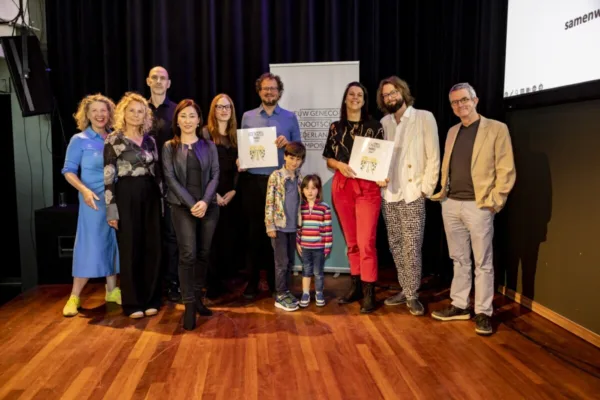The entrance exam consists of a practical and a theoretical part. You will have to be successful in both parts in order to secure a place.
The practical exam (audition)
For the first round of the audition (pre-selection) we ask you to send in recordings of the pieces as mentioned below. You can record the different pieces in separate takes.
If you are invited for the second round, you can prepare the same pieces. Please bring a program with you, so the jury knows what you have prepared. The audition will take 15-20 minutes.
Snaredrum
Technical skills
- Building up speed with open rolls (rrll) and single paradiddles, starting at a slow tempo.
Etudes
Choose one etude, for example:
- Ch. Wilcoxon: Rudimental Swing Solo’s: Rolling in Rhythm (in tempo 120-144)
- M. Peters: Intermediate nr. 30 or nr.3 2 or M.Peters: Advanced nr.9
- G. Whaley: Rhythmic Patterns of Contemporary Music, nr. 24
- J. Delécluse: Douze etudes nr.1 or Test Claire
Timpani
- Hearing: good hearing and knowledge of intervals and chords.
- Solfège: singing intervals in tune.
Technicall skills
- RLRL alternating roll in pp, mf, f, ff
Etudes
Two different études with signature from the orchestral repertoire. Voices, rolls, dynamic variety, rhythmically and metrically accurate.
Examples from repertoire:
- R. Hochrainer, Etuden für Timpani, (no. 47 t/m 54)
- N. Woud, Symphonic studies solo Timpani (no. 1.2.8.10)
- H. Knauer, Paukenstudien (no. 66, 67)
Marimba
Choose one solo piece (4 mallets), for example:
- E. Sammut, Rotation 1
- C.O. Musser, Prelude or etude of your choise
- R. Gipson, Monograph IV
(For the live audition: We may cut you off during the piece).
Vibraphone
Instead of a marimba piece, you can also play a vibraphone piece/ etude (4 mallets), for example:
- D. Friedman, Vibraphone Technique
- E. Séjourné, 19 Etudes
(For the live audition: We may cut you off during the piece).
Multipercussion, setup solo pieces
Requirements BA1 for the video audition:
Choose one piece, or part of a piece, for example:
- L. Glassock, Motion
- M. Peters, Rondo for 4 Tom Toms
- E. Kopetzki, Wild Garden
- M.Kitazume, Side by Side (Excerpt: pages 3-4)
- K. Volans, Asanga (Excerpt: bars 78-136)
Snaredrum
Technische vaardigheden
Opbouwen in snelheid van de open roffel (rrll) en single-paradiddles, beginnend in een langzaam tempo.
Etudes
Kies één etude, bijvoorbeeld:
- Ch. Wilcoxon, Rudimental Swing Solo’s: Rolling in Rhythm (tempo 120–144)
- M. Peters, Intermediate nr. 30 of nr. 32, of Advanced nr. 9
- G. Whaley, Rhythmic Patterns of Contemporary Music nr. 24
- J. Delécluse, Douze études nr. 1 of Test Claire
Timpani
Horen en solfège
• Goed gehoor en kennis van intervallen en akkoorden.
• Intervallen zuiver kunnen zingen.
Technische vaardigheden
• RLRL-alternating roll in pp, mf, f en ff.
Etudes
Speel twee verschillende etudes met signatuur uit het orkestrepertoire.
Voorbeelden uit het repertoire
- R. Hochrainer, Etuden für Timpani (nr. 47 t/m 54)
- N. Woud, Symphonic Studies for Solo Timpani (nr. 1, 2, 8, 10)
- H. Knauer, Paukenstudien (nr. 66, 67)
Marimba
Kies één solowerk voor vier mallets, bijvoorbeeld:
- E. Sammut, Rotation 1
- C.O. Musser, Prelude of een etude naar keuze
- R. Gipson, Monograph IV
Voor de live auditie kan je uitvoering worden afgebroken.
Vibrafoon
In plaats van marimba mag je ook een werk voor solo-vibrafoon of etude voor vier mallets spelen, bijvoorbeeld:
- D. Friedman, Vibraphone Technique
- E. Séjourné, 19 Etudes
Voor de live auditie kan je uitvoering worden afgebroken.
Multipercussion (alleen voor de video-auditie)
Kies één werk of een deel daarvan, bijvoorbeeld:
- L. Glassock, Motion
- M. Peters, Rondo for 4 Tom Toms
- E. Kopetzki, Wild Garden
- M. Kitazume, Side by Side (fragment: p. 3–4)
- K. Volans, Asanga (fragment: maten 78–136)
For all suggestions applicable: works of comparable or higher level are also acceptable.
The evaluation of the practical part of the entrance exam will be in part weighed by the (combination of) following factors:
- previous music education
- development prognosis
- professional perspective
- technical realisation
- musical expression
Please find examples of theory exams here.








